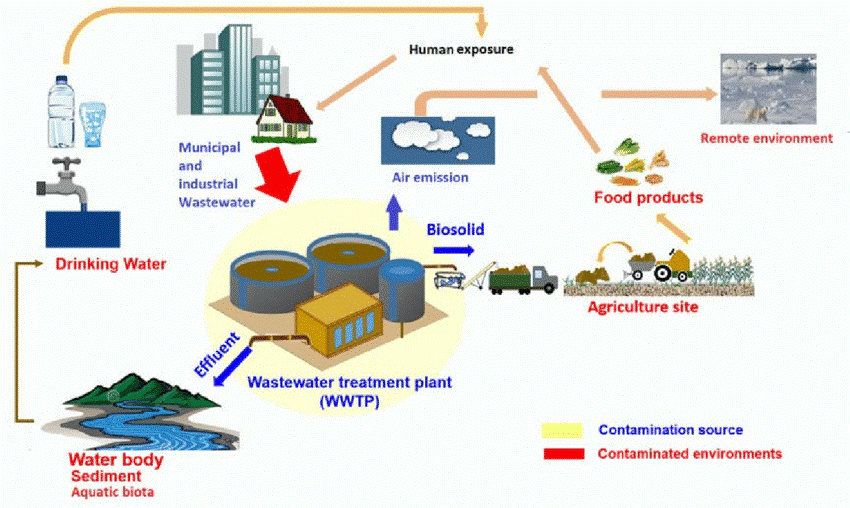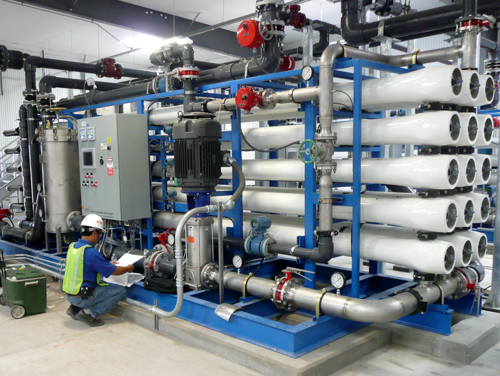Your Overview to PFAS Treatment Technologies and Perks
The prevalence of PFAS contamination in water resources demands a complete understanding of offered therapy innovations. Each technology not only targets certain PFAS compounds however likewise plays an essential function in improving total water top quality and protecting environmental integrity.
Comprehending PFAS Contamination
Recognizing PFAS contamination is crucial for addressing its pervasive effect on environmental and human wellness (m270 pfas treatment). Per- and polyfluoroalkyl materials (PFAS) are a group of synthetic chemicals commonly made use of in numerous industrial and consumer items due to their water- and grease-resistant residential properties. Generally discovered in firefighting foams, non-stick cooking equipment, and water-repellent fabrics, PFAS have actually entered the atmosphere with manufacturing procedures, wastewater discharges, and leaching from land fills
Once released, these substances continue the environment, bring about widespread contamination of soil and water resources. Their distinct chemical framework, defined by strong carbon-fluorine bonds, makes them resistant to destruction, resulting in a phenomenon recognized as "forever chemicals." Consequently, PFAS can collect in the body and the food cycle, potentially causing damaging health effects, including immune system disturbance, developing issues, and a boosted threat of certain cancers.
Regulatory firms and health and wellness companies are progressively identifying the importance of PFAS contamination, prompting initiatives to monitor, examine, and mitigate its impacts. Understanding the paths of PFAS contamination is vital for informing public plan and establishing reliable techniques to protect both ecological and human health.
Review of Treatment Technologies
Numerous treatment modern technologies have been established to address the obstacles presented by PFAS contamination in water and soil. These modern technologies can be generally identified right into a number of classifications, each with its distinct systems and efficiency in eliminating PFAS compounds.
One popular approach is ion exchange, which makes use of resin products to catch and get rid of PFAS from infected water. This approach is especially effective for short-chain PFAS and can accomplish considerable reductions in concentration degrees. An additional innovation, progressed oxidation processes (AOPs), uses strong oxidants and ultraviolet light to break down PFAS right into much less hazardous materials. AOPs appropriate for dealing with a variety of PFAS compounds but may need cautious optimization to maximize efficacy.

Activated Carbon Filtering
Turned on carbon purification is an extensively utilized method for the removal of PFAS from contaminated water, known for its ability to adsorb a broad variety of organic compounds. This innovation utilizes activated carbon, an extremely porous material with an extensive surface area, which helps with the binding of PFAS molecules with physical adsorption. The performance of turned on carbon in removing PFAS is influenced by a number of variables, including the kind of carbon made use of, the call time, and the focus of PFAS in the water.
One of the advantages of activated carbon filtering is its versatility; it can be carried out in various arrangements, such as granular activated carbon (GAC) systems or powdered turned on carbon (POLITICAL ACTION COMMITTEE) systems. GAC systems are generally used in larger-scale applications, while political action committee can be made use of in smaller or short-lived setups. The technology is reasonably easy to run and keep, making it available for several water therapy facilities.

Ion Exchange Systems
Ion exchange systems stand for one more reliable technique for the removal of PFAS from infected water, enhancing techniques like triggered carbon filtering. These systems operate the principle of trading ions in the water with ions hung on a resin product. Ion exchange resins can be specifically developed to target the adversely billed PFAS substances, effectively recording them and allowing cleaner water to pass through.
One of the primary advantages of ion exchange systems is their ability to eliminate a vast range of PFAS, including both long-chain and short-chain versions. This versatility makes them suitable for various applications, ranging from municipal water treatment to industrial procedures. In addition, ion exchange systems can usually achieve lower discovery limitations for PFAS contrasted to a few other treatment approaches, thus improving water top quality.
Nevertheless, it is important to keep track of and manage the regrowth of ion exchange media, as the performance can decline over time because of saturation. Correct maintenance and substitute of the resin are crucial for maintaining Find Out More the system's efficiency. In general, ion exchange systems provide a reliable and reliable service for PFAS elimination, contributing considerably to safe alcohol consumption water requirements and environmental management.
Advanced Oxidation Processes
Advanced Oxidation Processes (AOPs) utilize powerful oxidants to successfully degrade PFAS compounds in infected water. These ingenious therapy methods produce highly reactive types, such as hydroxyl radicals, that can damage down complex PFAS molecules right into less unsafe byproducts. Look At This m270 pfas treatment. AOPs normally use combinations of ultraviolet (UV) light, ozone, hydrogen peroxide, or Fenton's reagent, improving the oxidation possibility and boosting degradation performance
The key advantage of AOPs depends on their ability to target a broad variety of PFAS compounds, including both long-chain and short-chain versions. This versatility is essential, as PFAS contamination often entails combinations of various substances with varying chemical frameworks. In addition, AOPs can be integrated right into existing water treatment systems, making them a functional service for lots of communities and markets.
Nonetheless, the implementation of AOPs can be resource-intensive, needing cautious factor to consider of functional prices and power intake. In addition, while AOPs work in breaking down PFAS, they may not totally get rid of all by-products, necessitating more treatment steps - m270 pfas treatment. On the whole, AOPs stand for an encouraging method for addressing PFAS contamination, adding to cleaner water sources and improved public wellness protection

Verdict
Finally, resolving PFAS contamination calls for a detailed understanding of available treatment modern technologies. Turned on carbon filtering, ion exchange systems, and advanced oxidation processes each his explanation present distinct advantages for effectively removing these harmful substances from water resources. By picking the ideal technology, communities can improve water top quality, protect public health and wellness, and minimize the environmental dangers connected with PFAS exposure. Continued research study and execution of these methods are vital for efficient administration of PFAS contamination in impacted locations.